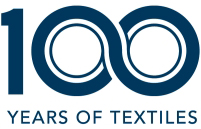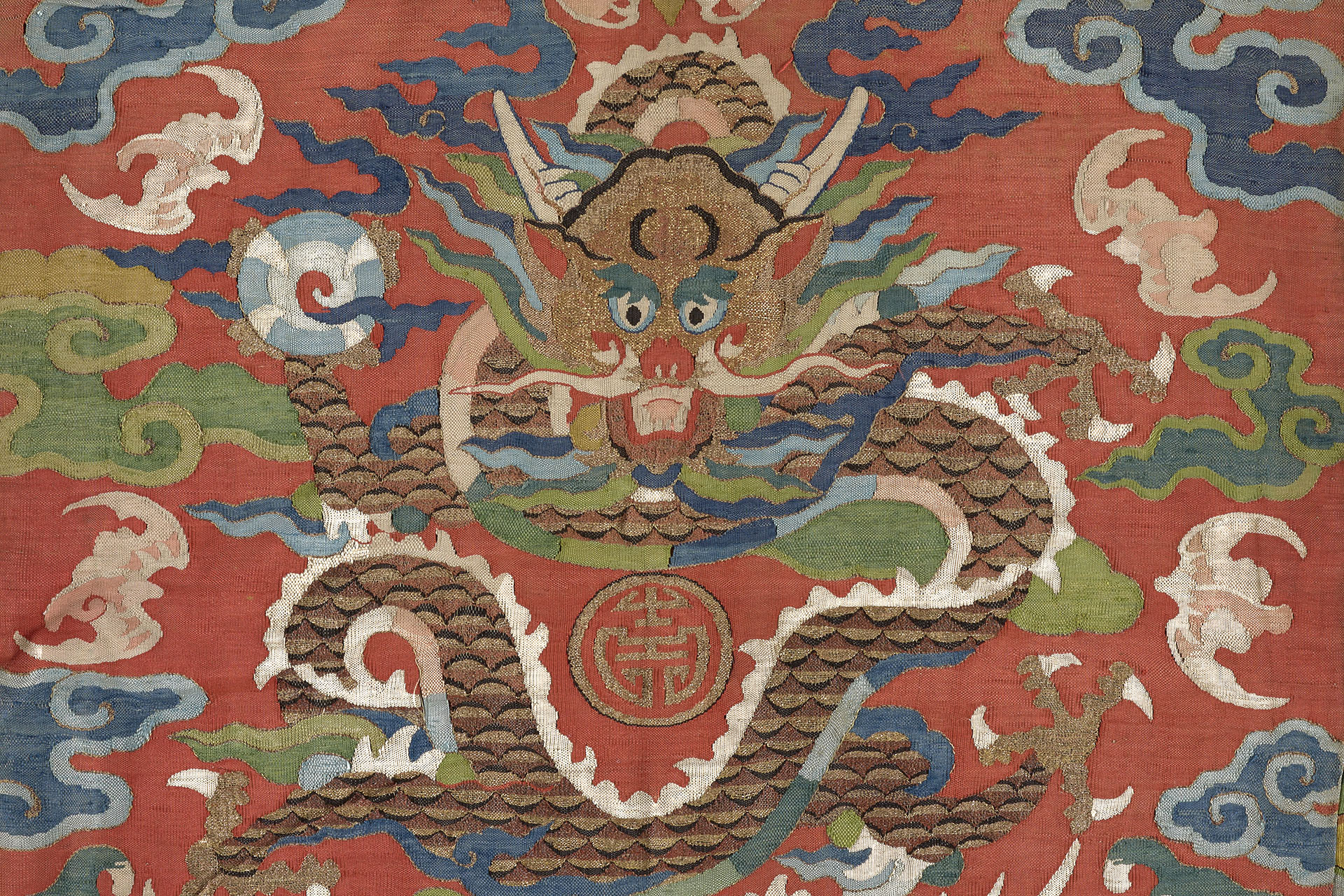MEDIA CONTACTS:
Julia Garbitt: julia [dot] metjian gwu [dot] edu (julia[dot]metjian[at]gwu[dot]edu), 617-921-4904
gwu [dot] edu (julia[dot]metjian[at]gwu[dot]edu), 617-921-4904
Chita Middleton: chita gwu [dot] edu (chita[at]gwu[dot]edu), 202-994-5593
gwu [dot] edu (chita[at]gwu[dot]edu), 202-994-5593
WASHINGTON (May 6, 2025)—Promising solutions to overproduction and overconsumption in today's global fashion industry may be found by looking to textile traditions of the past, as presented in "Source Material: Lessons in Responsible Fashion" at The George Washington University Museum and The Textile Museum in Washington, D.C., on view May 15, 2025, through April 11, 2026.
The exhibition and related programs, which are part of the museum's centennial celebration, bring together garments that illustrate interventions from today and yesterday that promote longevity, recycling and reuse, and/or local resources. For example, historical textiles — including a Japanese jacket made of recycled yarns and a Central Asian ikat panel that shows evidence of its former life as a robe — are displayed alongside works by contemporary designers such as Charlotte McCurdy, Nkwo Onwuka and Walid Al Damirji, whose work encourages the conscientious use of precious textile resources.
"This timely exhibition is part of our continuing effort to make our collections more relevant to students and the broader community we serve," said John Wetenhall, director, The George Washington University Museum and The Textile Museum. "While our vast holdings provided a variety of examples for 'Source Material,' we were also inspired by exhibition curator Katrina Orsini's trailblazing course, ‘Responsible Fashion,’ presented through the university’s sustainability minor, and GW’s Responsible Fashion Collective, a student organization that she advises."
According to Orsini, who serves as the museum’s programs associate for academic engagement, "The uniquely modern problems of massive amounts of waste, environmental damage, harm to people and animals, and loss of culture, were catalyzed by the innovations of the Industrial Revolution and have been accelerated by technological advances ever since. Studying The Textile Museum Collection can offer useful lessons on how different cultures approached textiles with a deep appreciation for materials and labor."
Throughout history, most cultures sought to wear a garment as long as possible, but since the Industrial Revolution, cheap labor practices, mass production, and trend turnovers contribute to a mentality of "fast" fashion. Interventions of longevity include a 19th-century Japanese kimono made with fabric tucked in pleats that could be let out as a child grows. For preservation, British artist Celia Pym applied purple interventions to mend moth-eaten holes in a sweater, known as Hope's Sweater, 1951, that once belonged to her mother Hope and was passed down to her brother William. To promote longer durability, Petit Pli's Littlehuman Versatile Pullover (Mulberry Moon colorway) and Versatile Bottoms (Ferrous Clay colorway) from 2017 are made from a patent-pending fabric composed of PET recycled plastic.
Examples of recycling and reuse range from a 19th-century Japanese farmer's coat incorporating woven cotton strips from old garments and textiles, to current-day rústica (rustic) yarn produced by Ecocitex from discarded clothes that arrive from the Global North and end up in the world's largest textile landfill in Chile's Atacama Desert; a Web Snug made by Nigeria's NKWO Design Studio, which developed a unique kind of strip weave known as Dakala Cloth™ using secondhand denim; and Confetti Net Runaway Dress made by 3 Women in California from 1930s sheer confetti curtains stored for decades and found at a flea market in San Francisco.
The disposable mentality created by the fashion industry puts extra pressure on designers to satisfy consumers' appetite for a new look. To curb this cause of landfill buildup, Green Matters Natural Dye Company offers "a dye lot of the month" service. Community members can send in garments for overdyeing in that month's select colors made from natural dyes. Two examples, a dress and jacket, are on display.
Before shipping networks connected the globe, most cultures used the natural resources in their immediate environment to make cloth. Textiles made from local resources include a 19th-century Filipino blouse made of fibers extracted from pineapple plants. The introduction of a new discipline known as biodesign has made it possible for designers to incorporate unexpected natural materials into their garments. A raincoat, After Ancient Sunlight by Charlotte McCurdy from 2019 is made of biopolymers found in algae. By using algae as her source material, McCurdy’s garment captures more carbon than is used to produce it, resulting in a product that is referred to as "carbon negative."
Using a QR code, museum visitors can access an interactive map developed by George Washington University students Ariana Rivadeneira and Grace Lemoine. The map reveals surprising materials historically used to make textiles in the museum's collection. Visitors are also offered an evergreen takeaway guide with tips on how to become a more responsible fashion consumer.
Support for this exhibition is provided by the Contemporary Exhibitions Fund.
Special Public and Member Programs
Guided tours, as well as public programs, explore themes from the "Source Material" exhibition. They include “Wreck the Runway” on Thursday, May 22, 6:00 p.m.-9:00 p.m. Inspired by responsible fashion movements, the museum partnered with Remake D.C. and D.C. Goodwill for this after-hours, community-driven event highlighting reuse and fashion in the DMV. Explore the exhibition, enjoy performances by local musicians, and strut the gallery catwalk in the “Wreck the Runway” fashion show to show off your best thrift finds, favorite hand-me-downs or latest upcycling project. Food and drink will be provided by Empanadas de Mendoza and Lost Generation Brewing Company. Advance ticket purchase is required, $20 per person, or $15 for museum members) and includes two drink tickets (alcoholic and non-alcoholic options), food and crafts.
For in-person gallery tours led by experienced docents for a group of up to 20 people, submit an online request at least three weeks in advance. Museum members have access to in-person and video tours of the exhibition with the curator.
On Saturday afternoons between July 12 and August 9, stop by the museum for demonstrations and hands-on activities related to textile reuse, repair and sustainability. These pop-up workshops are led by Chesapeake Fibershed, an organization working to create a regional network between fiber producers, mills, dyers, artisans and enthusiasts across Virginia, Maryland, Delaware, Pennsylvania and West Virginia.
Find out more about The Textile Museum's centennial celebration, including the centennial book Textile Treasures, exhibitions and sponsors.
Visiting Information
The George Washington University Museum and The Textile Museum is located on GW’s Foggy Bottom campus at 701 21st Street, NW, in Washington, D.C., just blocks away from the Smithsonian Renwick Gallery, the White House, Kennedy Center and the National Mall. Galleries are open to the public Tuesday through Saturday from 10 a.m. to 5 p.m., closed on university holidays. Admission to the museum is free.
For the most up-to-date information on the museum's visiting hours, exhibitions and educational programs, please check the museum website.
-GW-



